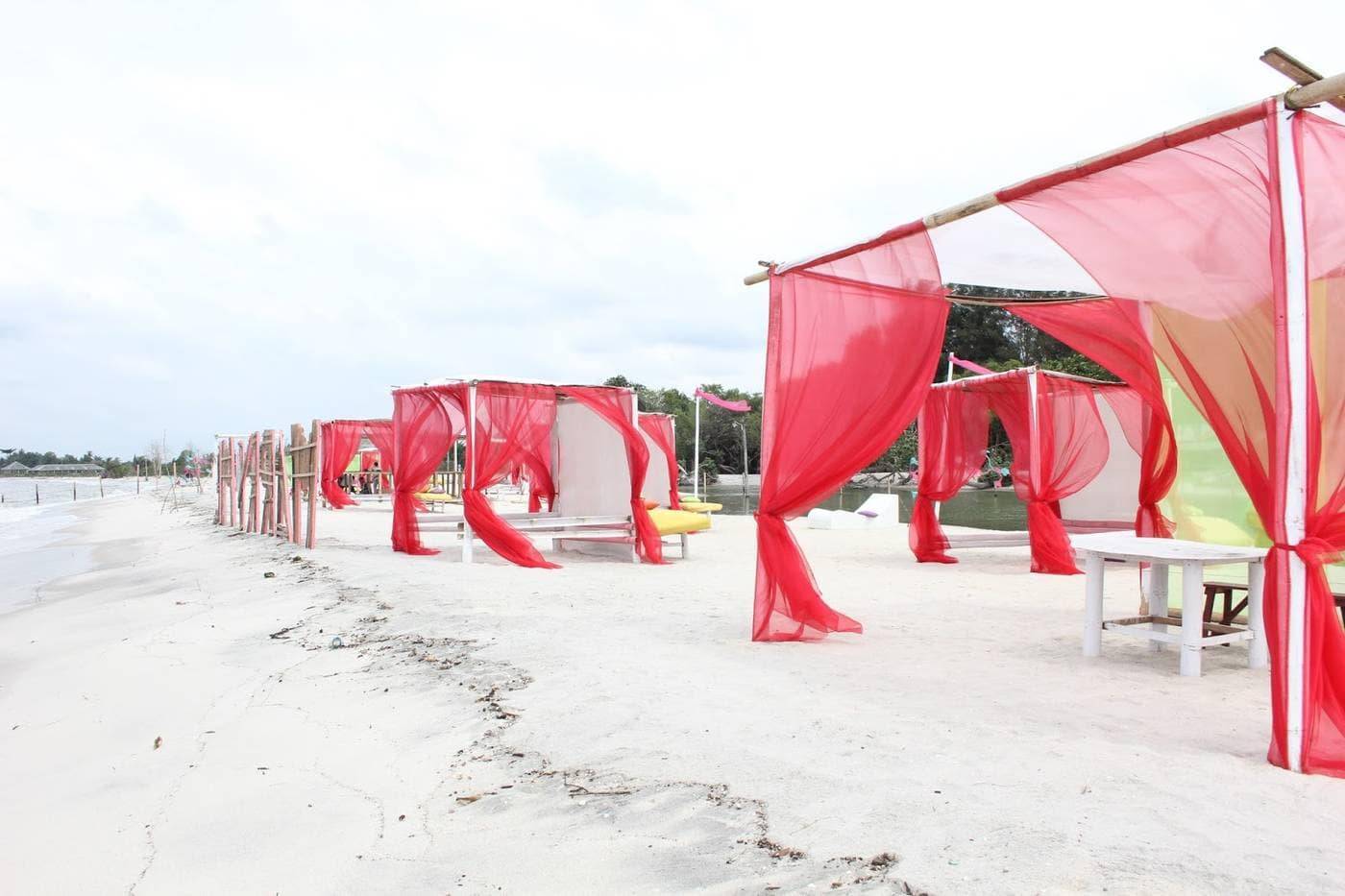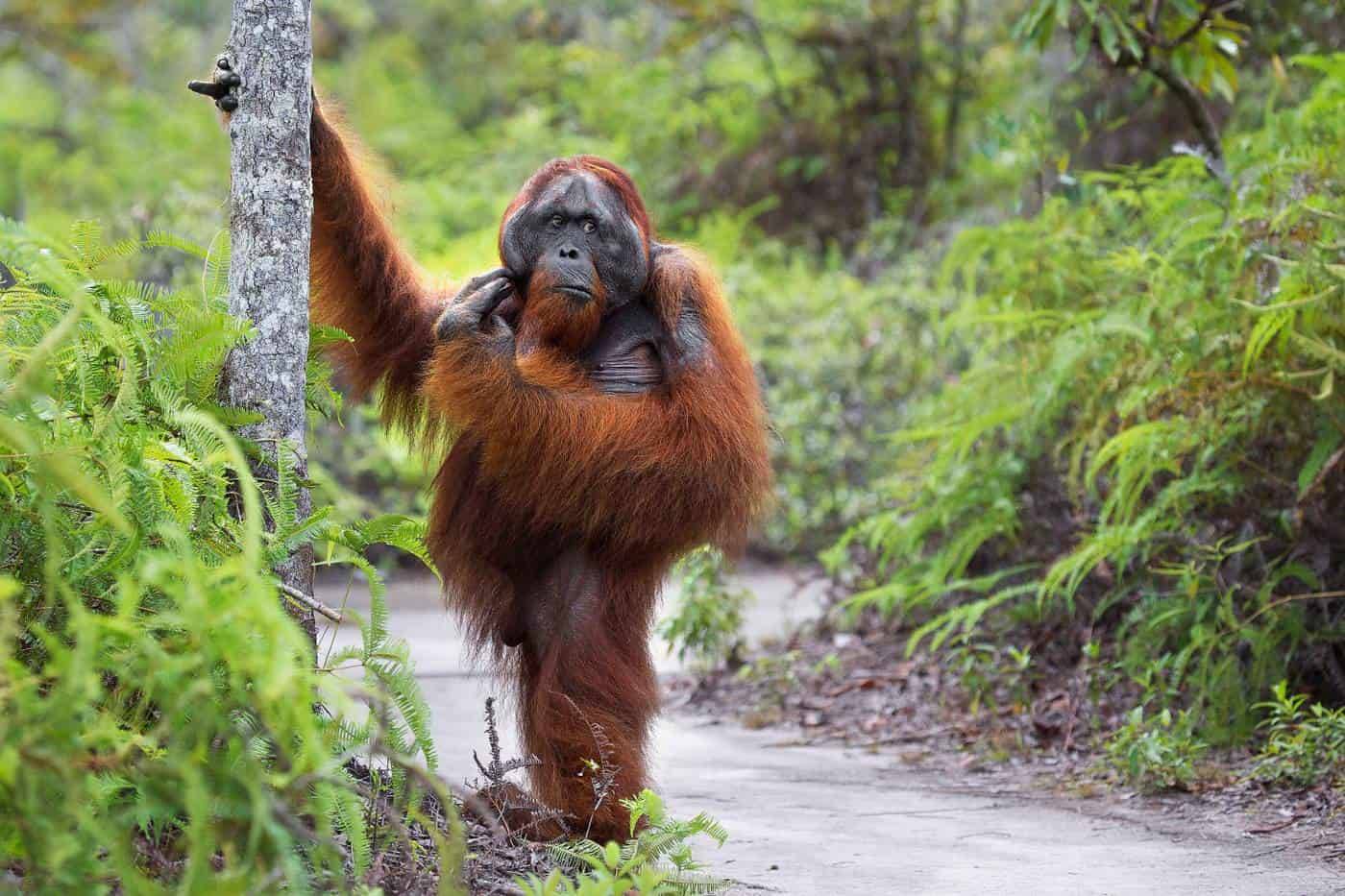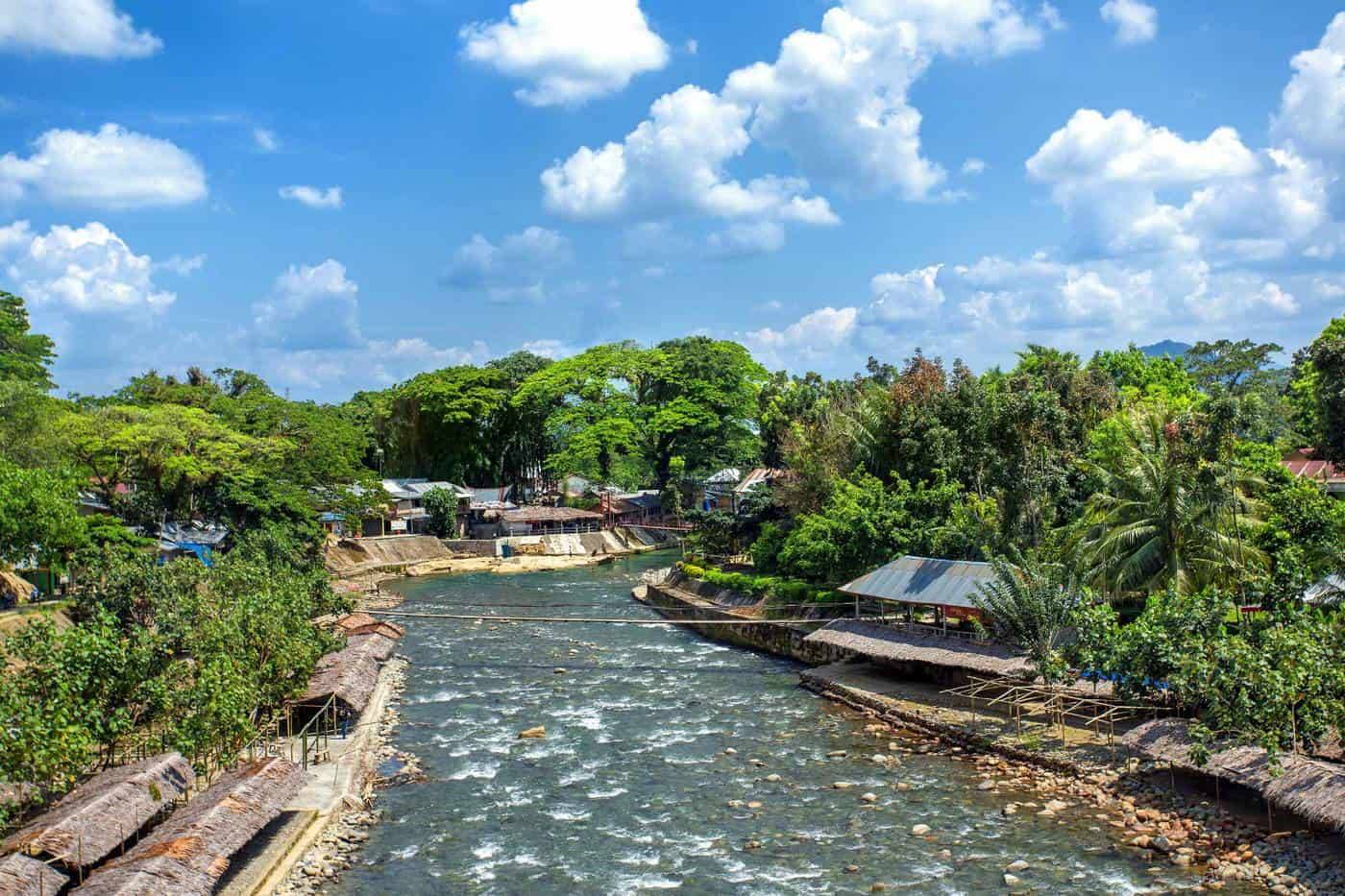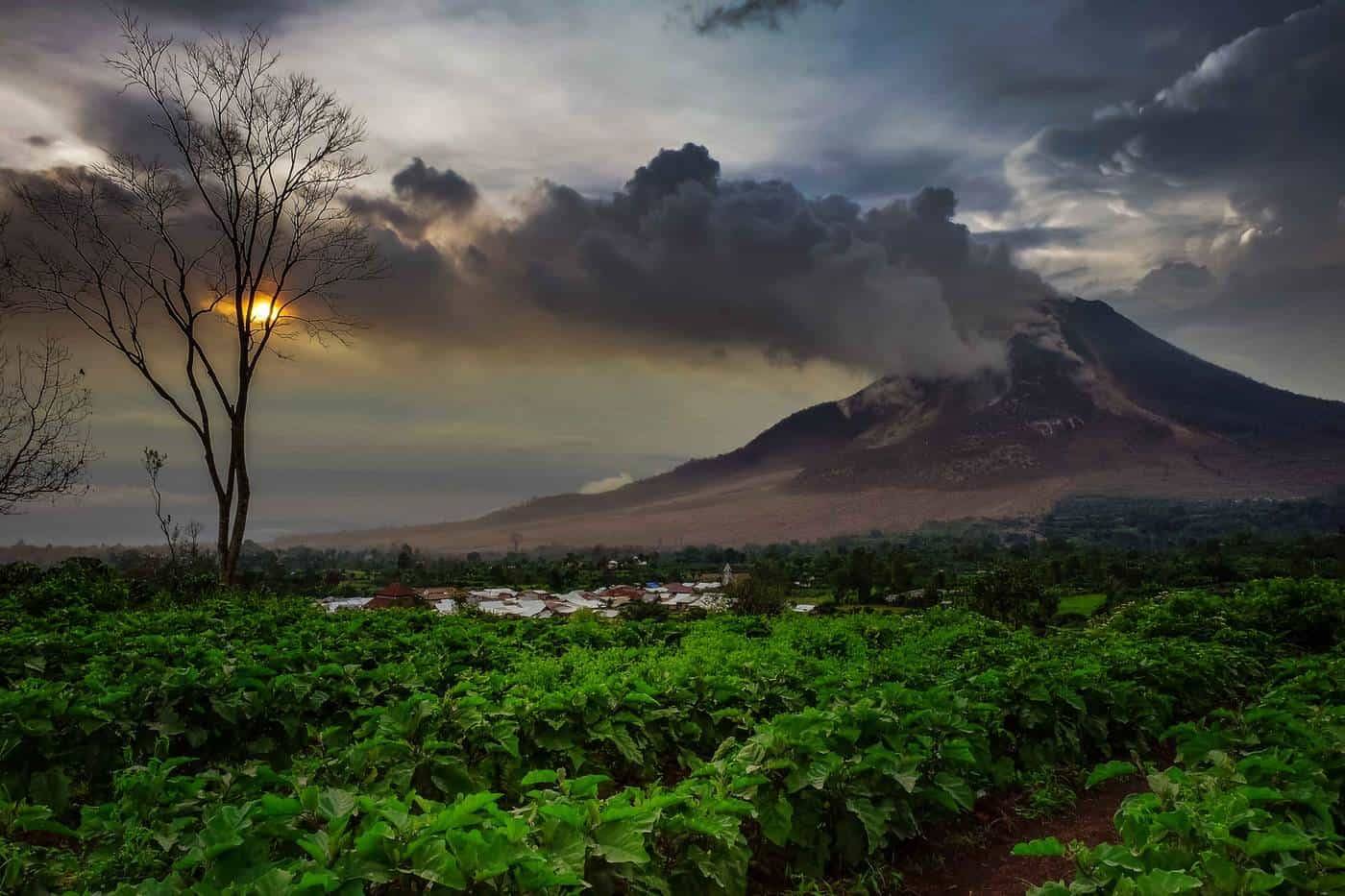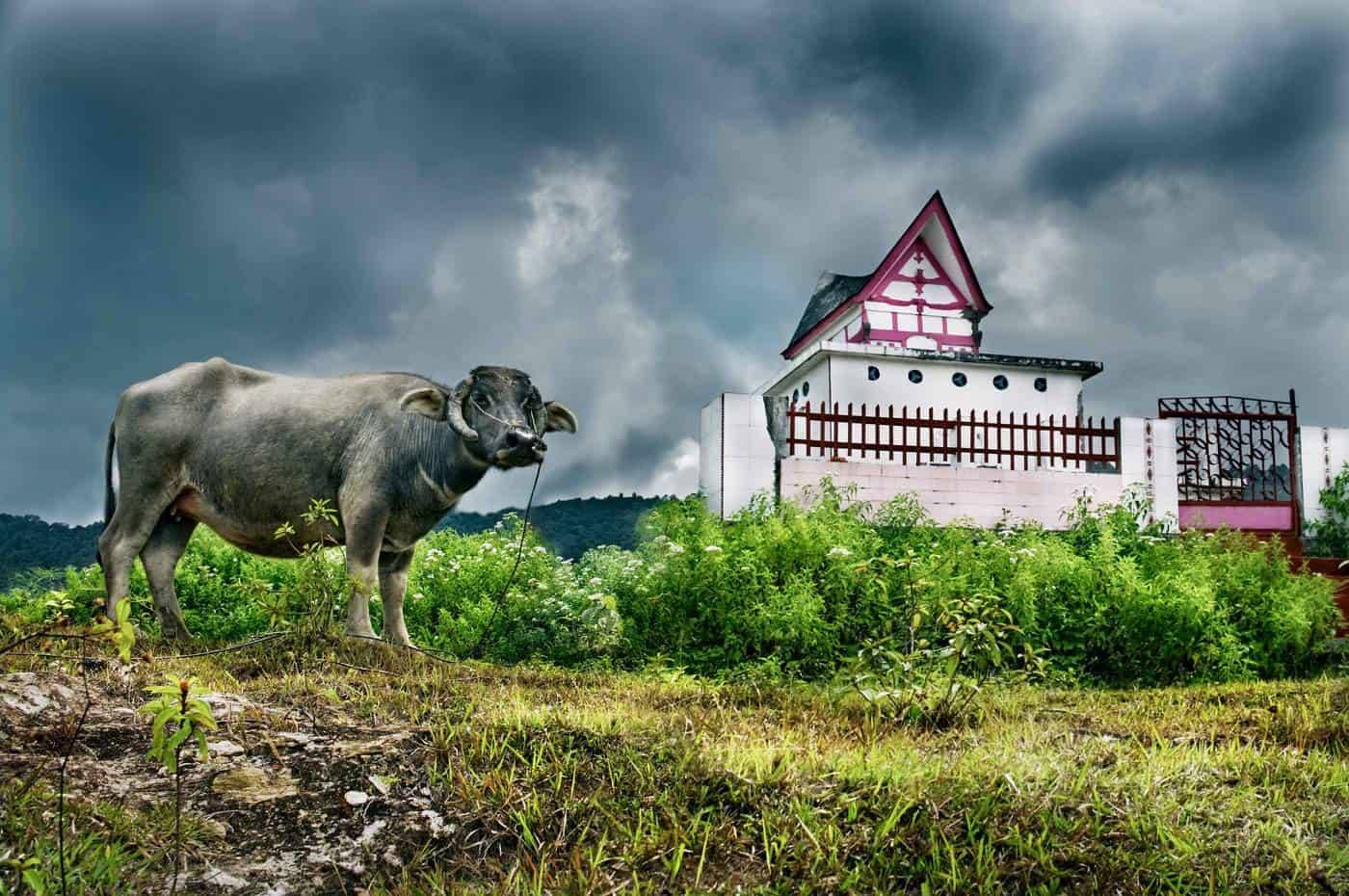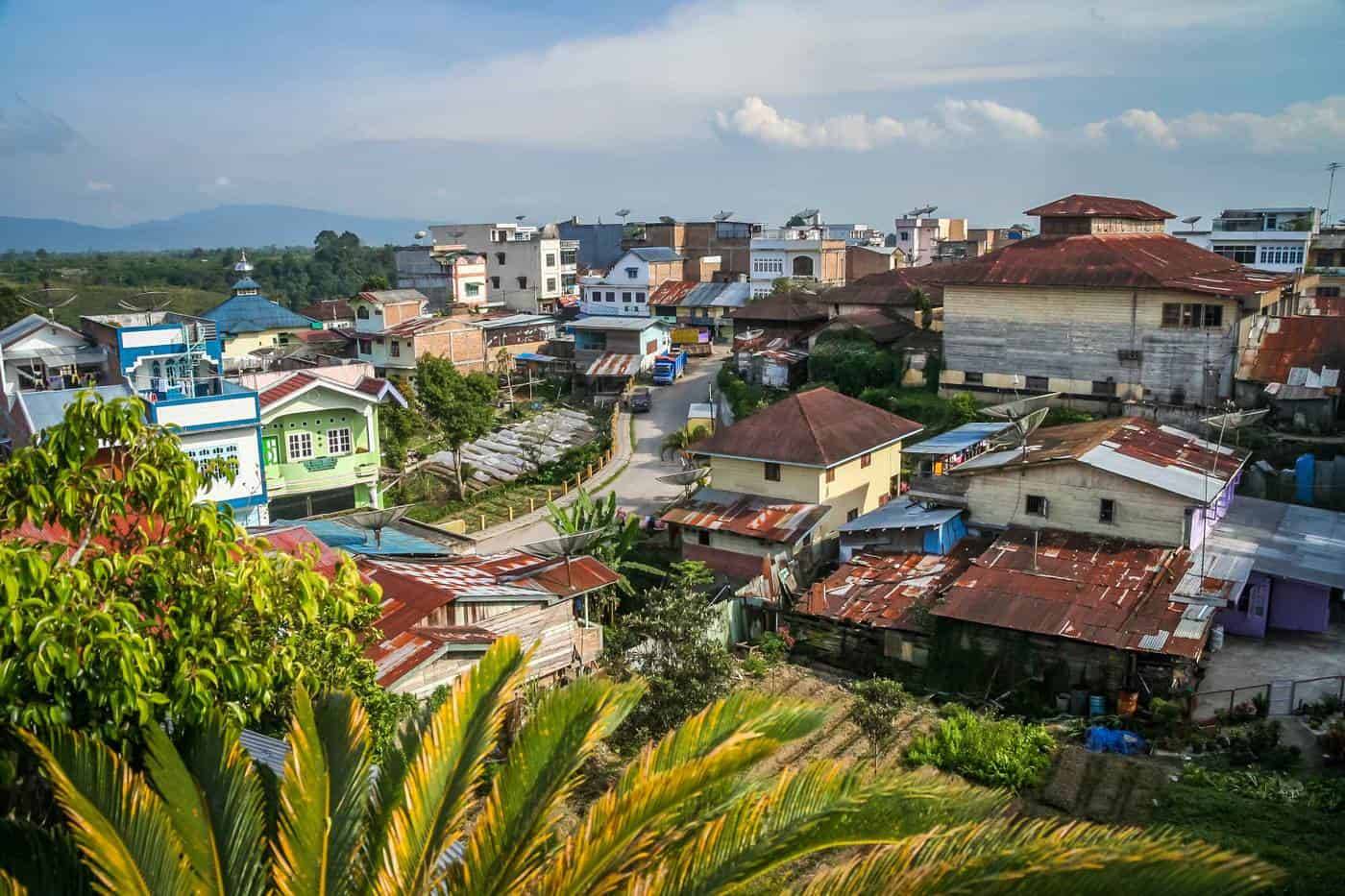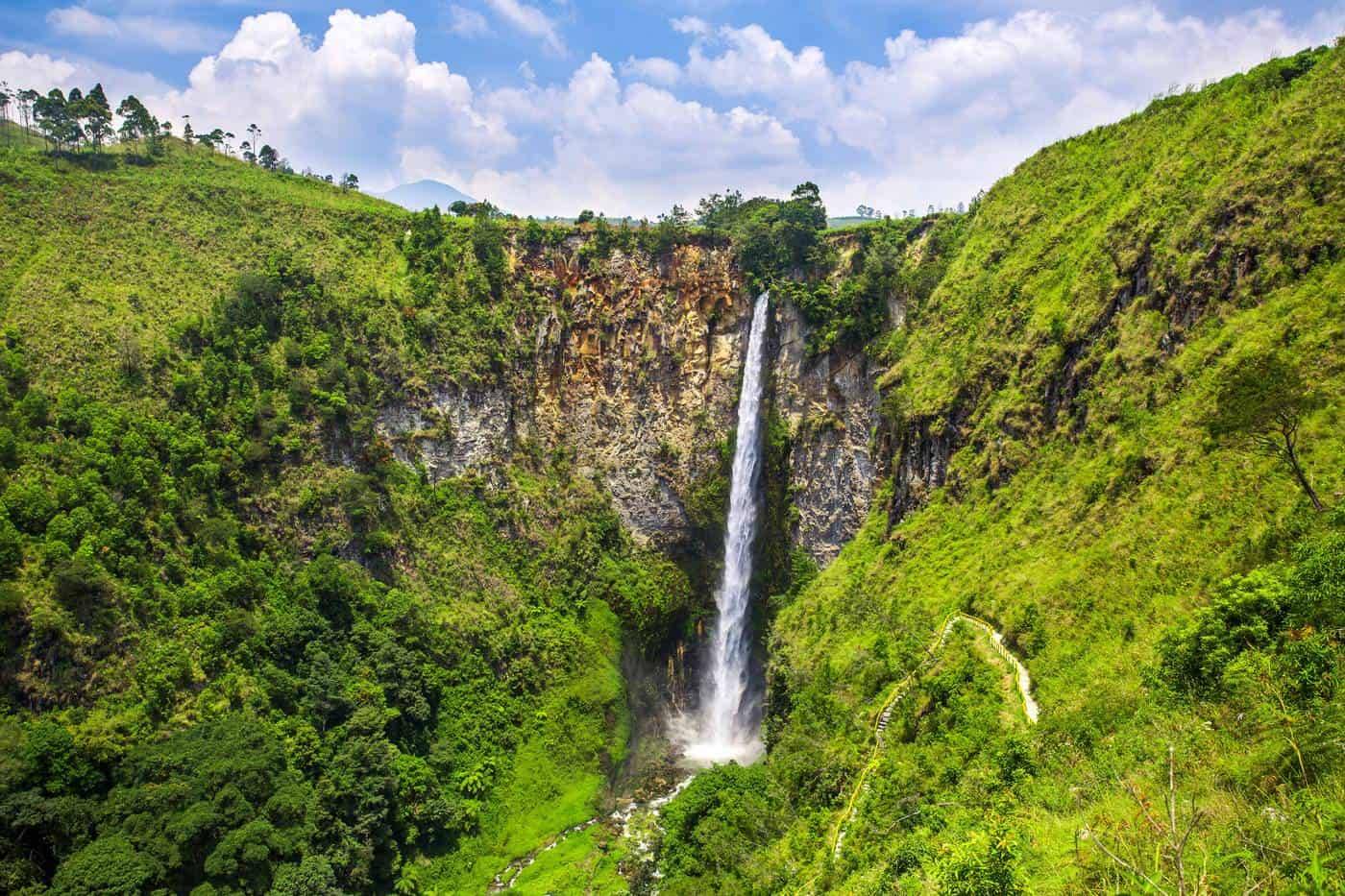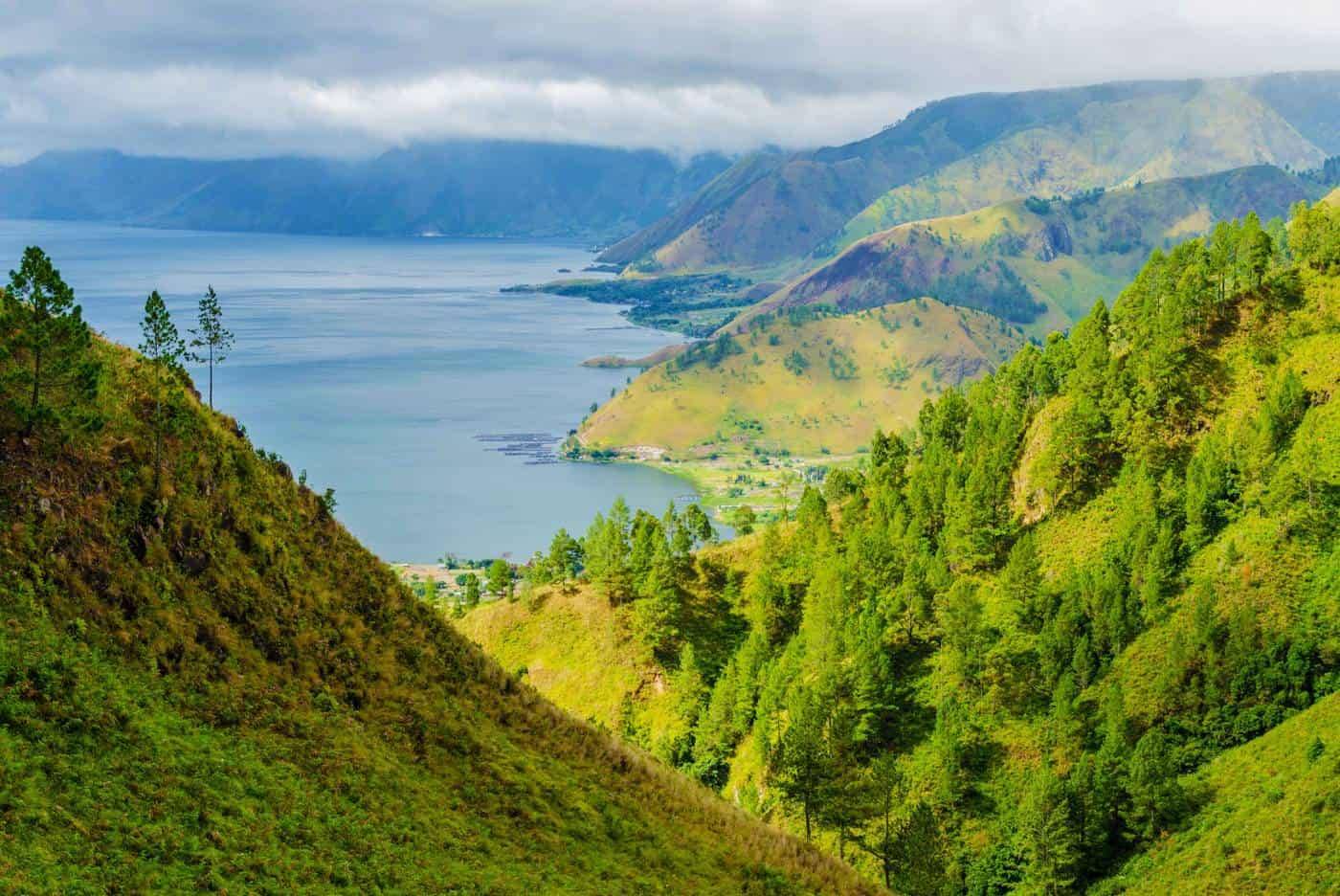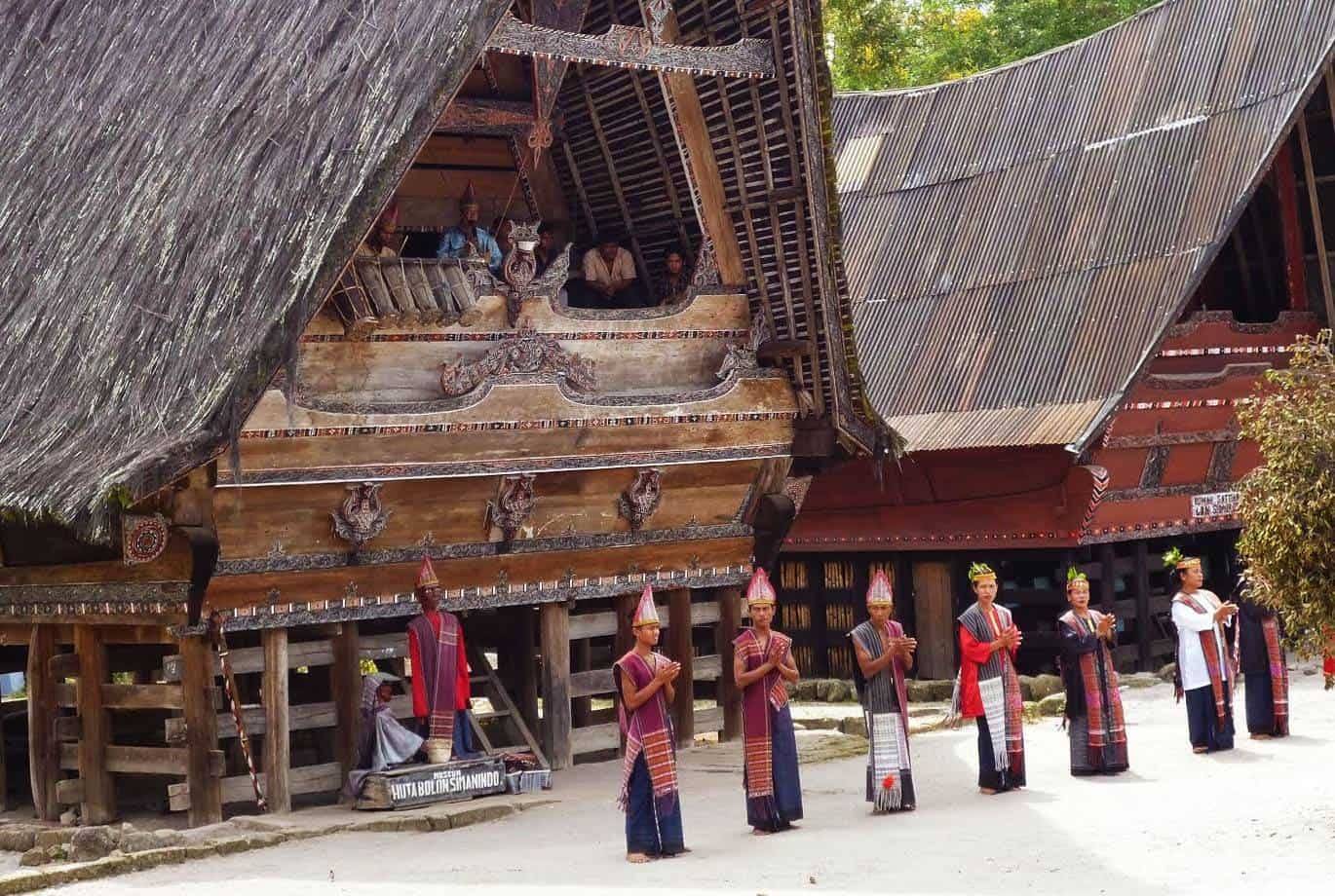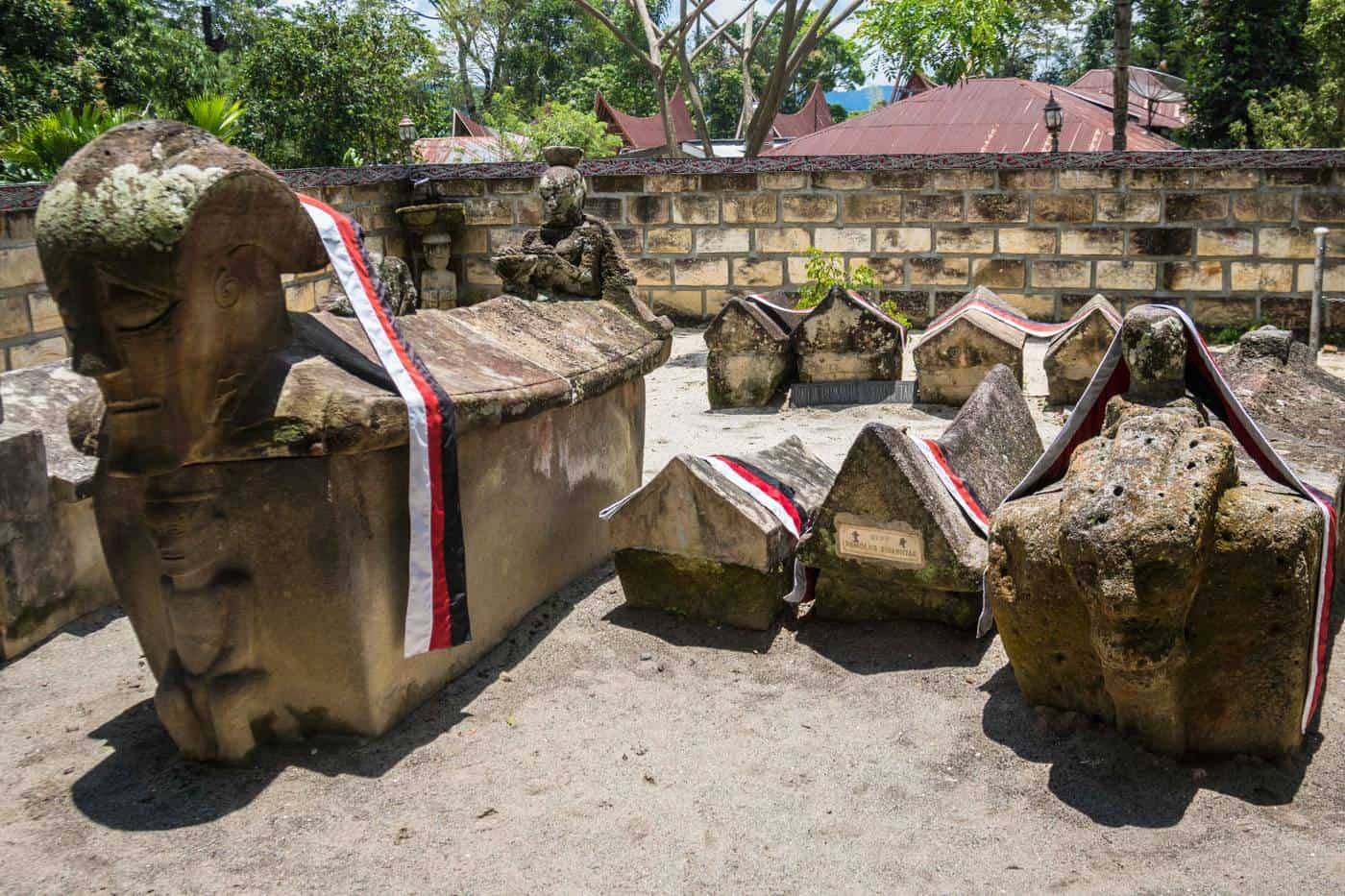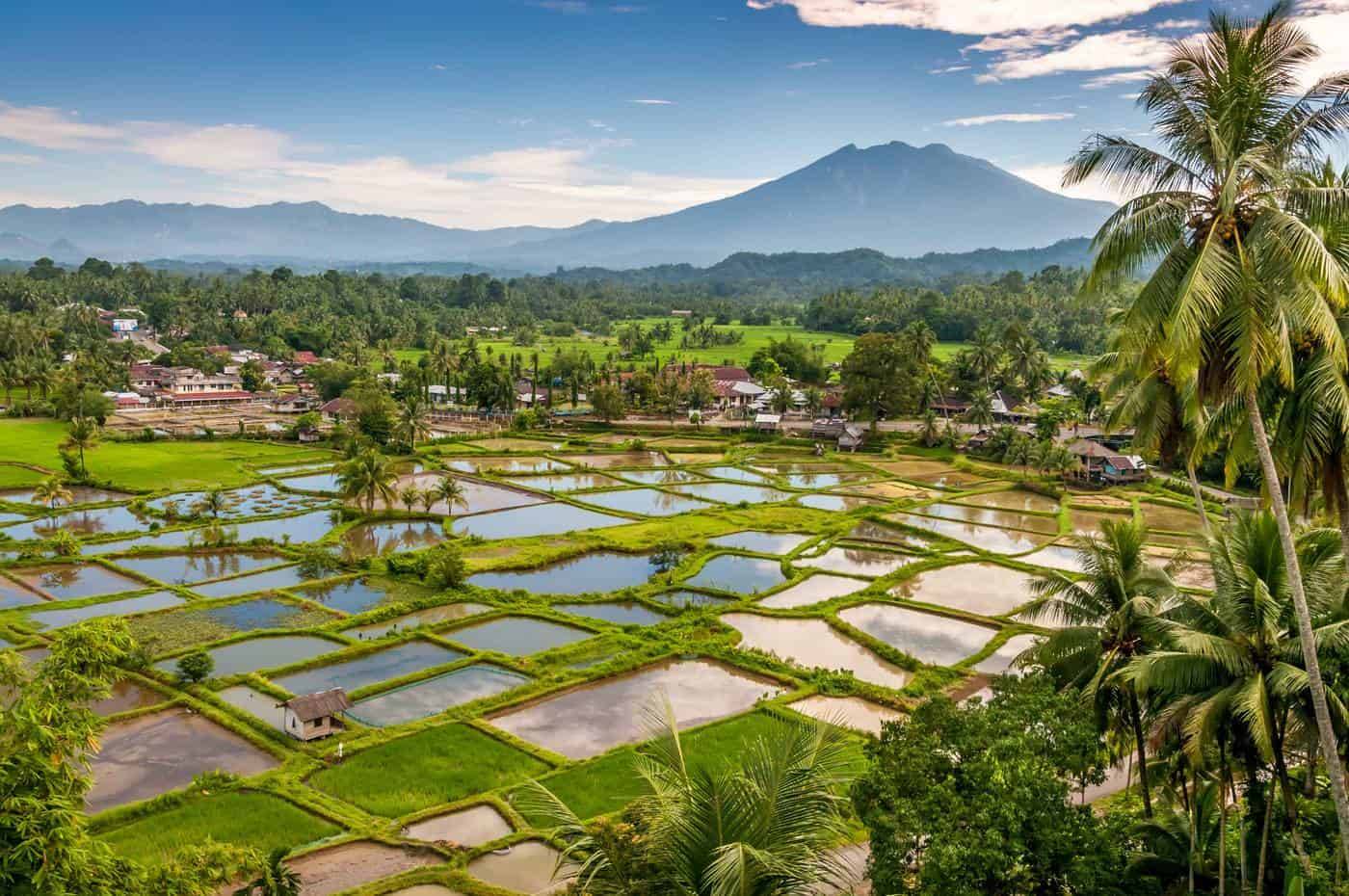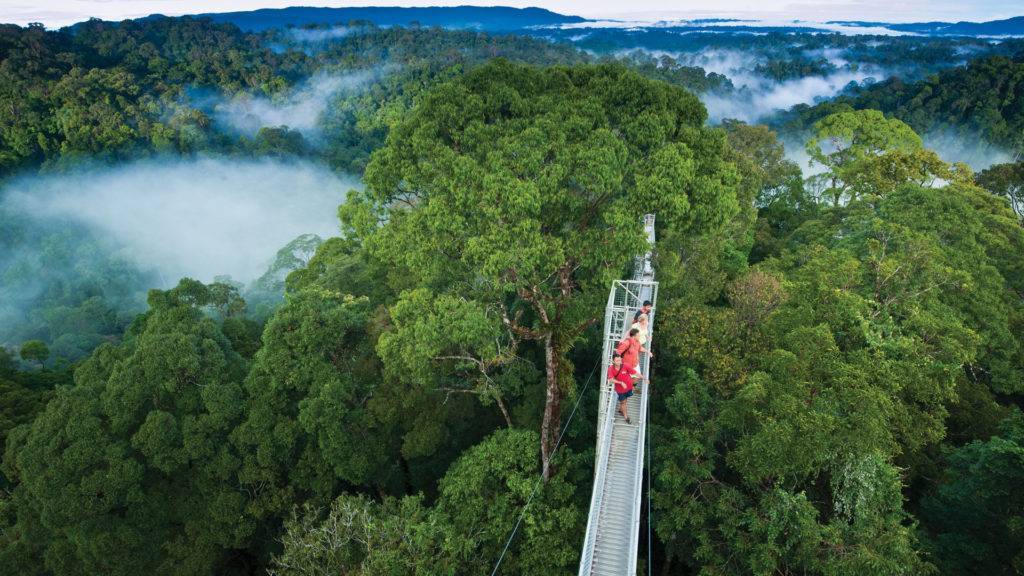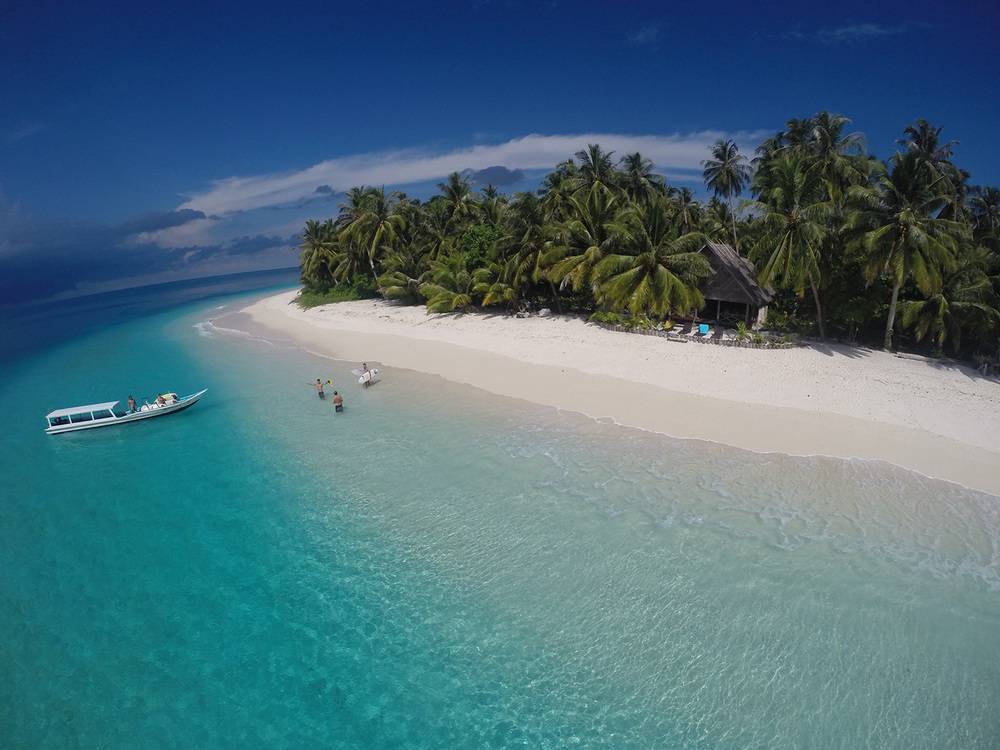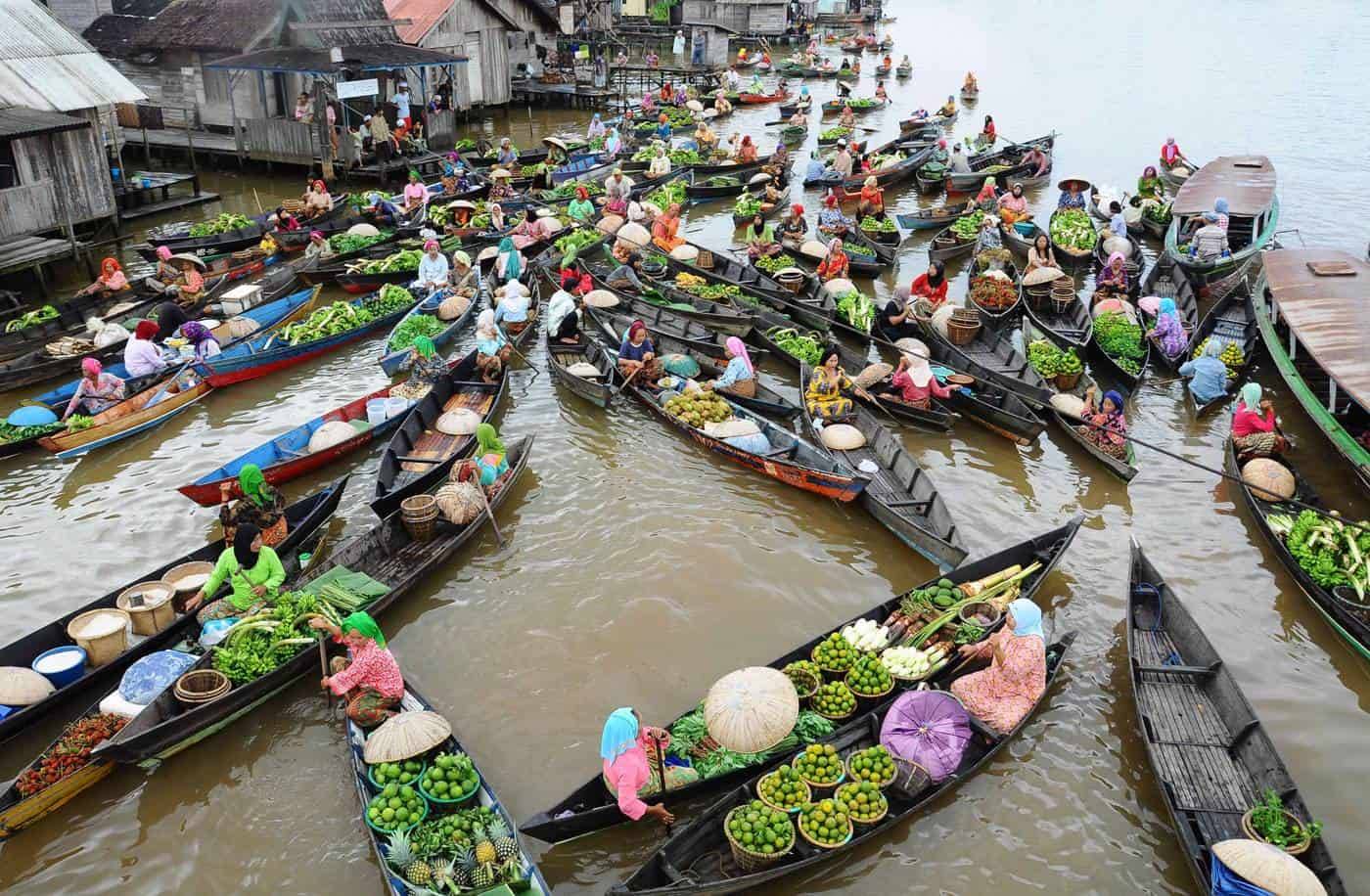
NORTH SUMATRA – FROM RAINFOREST TO THE VOLCANIC LAKE
West Sumatra surely is the star of the show on the island, yet North Sumatra is just a little behind when it comes to tourism. It is home to one of the few places on the planet where to meet a wild orangutan and some of the most significant tribes of Indonesia – Bataks – once notorious cannibals.
Lake Toba, Samosir Island and Bukit Lawang are the major points of interest in North Sumatra, although the region has much more to offer – jungle trekking, volcano hiking, springs and waterfalls, adrenaline sports, culture & eco-tours, and abundant wildlife.
MEDAN
The 4th largest city in Indonesia and the largest in Sumatra is a busy and crowded place, swamped by traffic. The all-around buzzing becaks, bemos, buses and motorbikes might feel a bit overwhelming. After all, this is a place with real and authentic Indonesian character.
The capital city of Sumatra is home to the Chinese, Indians and indigenous groups, and there the local architecture presents an interesting blend of temples, mosques, museums, Dutch colonial-era buildings and modern design.
Although there is little tourist infrastructure in the city, Medan is one of the best spots in Sumatra to get familiar with the local cuisine and culture as the locals are more likely to speak English. Medan is not exactly a destination to linger, but it cannot be skipped, for having an international airport and being the starting point to all attractions in North Sumatra.
THINGS TO DO IN MEDAN
- Buddhist Temples – Vihara Borobudur, Vihara Gunung Timur, Vihara Maha Maitreya
- Hindu Temples – Annai Velangkanni, Shri Mariamman, Pura Agung Raksa Bhuana
- Mesjid Raya Al-Mashun Mosque & Maimoon Palace
- Merdeka Walk & Kesawan Square, Old Chinese Mansion
- Museums – War Museums, Rahmat International Wildlife Museum & Gallery, Tondi Gallery
- Cermin Beach – water & fun park, seaside warungs
- Hill Park Green Hill City – theme park (for families)
- Sei Naga Lawan village – eco-tourism, mangrove walk
- Tangkahan Visitor Center – rainforest trekking, elephant washing, eco-tourism, various packages 2-4 day tours, all inclusive (8 hours drive from Medan, travel independently by public bus or book a tour in Medan)
- Perbaungan – stop by the idyllic Romance Bay (Pantai Romantis) – the favourite proposal and wedding beach in Sumatra
BUKIT LAWANG
The rainforest of Gunung Leuser National Park is a beautiful area for trekking and river tubing and, most notably, for Bukit Lawang – the largest animal sanctuary of Sumatran Orangutan.
Located on the banks of the Bohorok River, the centre was founded in 1973 by two Swiss zoologists – Monica Borner and Regina Frey, to study and protect these fascinating creatures and to return them to their natural habitat. They gained support from the World Wildlife Fund and made huge progress in the rehabilitation of orangutans rescued from captivity, or from forests destroyed through deforestation.
The Bohorok Orangutan Rehabilitation Centre is now run by the Indonesian government and open to tourists who can see how the fury apes are being released into the wild.
To assist the transition, there are two open feedings a day, during which the apes may come swinging through the jungle for a free meal. The hope is then that, the orang-utans will learn to find enough fruits in the rainforest on its own within time and become independent and self-sufficient.
THINGS TO DO IN BUKIT LAWANG
- Meeting the orang-utans in the Bohorok Orangutan Rehabilitation Centre
- Jungle trekking & camping is a once-in-a-lifetime experience (multi-day tours)
- Water activities – tubing, river rafting, kayaking, canoeing
- Eco-tours – there are many eco-lodges, homesteads and tour providers that offer various packages and expeditions
TO GET TO BUKIT LAWANG: 3 hours from Medan by public/tourist bus via a bumpy road (alternatively, private tours can be booked in Medan)
KARO HIGHLANDS
Covering the area of 5000 sq km, from the border of Aceh to Danau Toba, Karo Highlands is a vast and quite fertile volcanic plateau, at the heart of the Bukit Barisan range.
The native Karo ethnic minority is a subgroup of the legendary Batak Tribes, well-known for their animistic beliefs, ancient rituals and odd customs, amongst which the local funeral and reburial ceremonies are the rarities that attract most of the visitors.
During the colonial era, the Dutch taught the locals how to build pretty wooden houses with striking palm-frond gables, and the local Karo Adat architecture is one of the reasons for tourists to pay a visit.
Meanwhile, several traditional villages have opened to strangers, and for a small fee they can search around and take some pictures, e.g. Peceren, Gurusinga or Lingga Tulu. Eco-tourism is clearly in the limelight.
BERASTAGI
Berastagi is the gateway to the Karo Highlands and a lovely hill-station with a pleasant atmosphere. The town lies at an altitude of 1220 m which provides fresh air and spectacular views.
The surrounding forests of Berastagi boost natural attraction; Sipiso-Piso and Sikulikap Falls are amongst the highlights. Climbing Gunung Sibayak (2,212 m) or Gunung Sinabunk (2,451 m) is well-recommended to the experienced mountaineers while the Gundaling Hill (1575 m) can be reached by a vehicle or scooter.
There are numerous wonderful walking trails and hot springs in the area and well-developed eco-tourism infrastructure.
THINGS TO DO IN THE KARO HIGHLANDS
- Berastagi – fruit markets, hot springs, Gundaling farms, Bukit Kubu nature park, Mikie Funland
- Gundaling Hill – drive to the top of the hill for spectacular views to the Lake Toba (horse riding available)
- Climb Gunung Sibayak (2,212 m) or Gunung Sinabung (2,451 m) and have a dip in gorgeous hot springs on the way back (both volcanoes are a full day trip, 10-12 hrs return)
- Lumbini Natural Park – a beautiful Buddhist temple with Taman Alam Limbinis – a replica of the famous Shwedagon Pagoda in Myanmar
- Karo Villages – visit the ethnic Karo villages of Peceren, Gurusinga and Lingga Tulu and learn about their fascinating culture
- Sipiso-Piso Waterfall – hire a scooter and ride to the most photographed waterfall in Sumatra, stop by at the impressive Sikulikap Falls on the way back
TO GET TO KARO HIGHLANDS: by public bus/minivan from Medan to Berastagi (30 min drive)
DANAU TOBA & SAMOSIR ISLAND
Believed to be the world`s largest and deepest caldera, Lake Toba spans over 1.707 sq km and reaches the depth of 529 m.
Created by an enormous volcanic eruption more than 74, 000 years ago, it is a giant lake, sitting right at the heart of North Sumatra – in the Samosir Plateau. The lake is encircled by robust mountains and active volcanoes but also dense forests and swamps.
On the western shores of Lake Toba, a bridge links the legendary Samosir Island with the town of Pangururan – and this is where most of the travellers will want to go.
The Island of Samosir, also called ‘Island of the Death’ is culturally and geologically an important part of Danau Toba. It proudly stands in the middle of the lake, and it has been home to the Toba Bataks for years. The most popular attractions on the island are traditional villages, and ancient sarcophagi only discovered in the 1930s.
Lake Toba is only a few hours away from Medan, and it is an easy destination, and the most visited one, with very good facilities.
THINGS TO DO AROUND LAKE TOBA
- Tomok – discover the ancient sarcophagus of Raja Sidabutar and the sacred Hariara Tree
- Ambarita – search around the curious collection of stone chairs, one of which is mysteriously occupied by a stone statue
- Simanindo – cycle around the Samosir Islands and visit the tribal Batak Villages and their characteristic Jabu houses
- Toba Batak dancing performances – witness a spectacular morning dance in Huta Bolon Simanindo Museum (starting every morning around 10.30 am)
- Trekking – most of the tracks start at Ambarita, Garoga and Partukongan villages, but most of the other villages have trekking options around. The 18 km Danau Sidihoni Trail is one of the favourites
- Tuk Tuk – swimming, canoeing and other water activities are recommended
- Sidikalang – rent a scooter and visit the renowned Sumatran coffee region, Taman Iman Dairi (Garden of Faith – a place where 5 religions meet, Hindu, Isla, Buddhist, Confucian and Christian)
- Parapat – Asahan River Rafting (Tangga Village), water scooter hire, speedboat/rowing boat hire, ferry to Samosir Island
TO GET TO DANAU TOBA: by shuttle bus from Medan to Toba Lake (4-5 hr trip). To reach the Samosir Island, you will need to catch a ferry from the Tigaraja Harbour (Lake Toba). Boats operate every hour until 7 pm, however often irregularly.
USEFUL TRAVEL TIPS
Religion – Sumatra is strictly a Muslim Realm, and conservative dress is expected at all times, especially women. Female travellers occasionally reported feeling extremely uncomfortable at some places, e.g. tried to be touched by the locals due to their skin colour or bright hair, been subject to loud mockery for their “lack of clothing” and so forth. Be aware of the fact that many residents might have never seen a person of a Caucasian race and are not familiar with the “Western fashion”.
Health – There is a high risk of Malaria in Sumatra, particularly during the rainy season (Dec-Feb). Vaccinations such as Hepatitis A, B and Tetanus are recommended. In some cases, the Yellow Fever Immunisation is required (check with your national health policies).
Transport – The only way how to get around Sumatra is using local public transport/buses (angkot, labi-labi). However, this can often be a gruelling experience – distances are huge, the roads tortuous and the driving hair-raising. On the other hand, it is part of the Sumatran travel adventure. To move around locally, the best way is either to hire an ojek, becak or bendi or rent your own scooter/bicycle (depending on the destination).
WHEN TO TRAVEL
The ideal time to travel to North Sumatra is between June and September, during the dry season.
HOW TO GET THERE
Fly to Medan (via Jakarta/Singapore/Kuala Lumpur)
For all international flights go to www.momondo.com or www.skyscanner.com
For all domestic Indonesian flights check out www.garuda-indonesia.com



